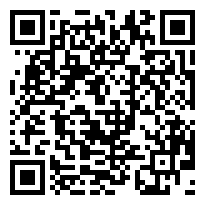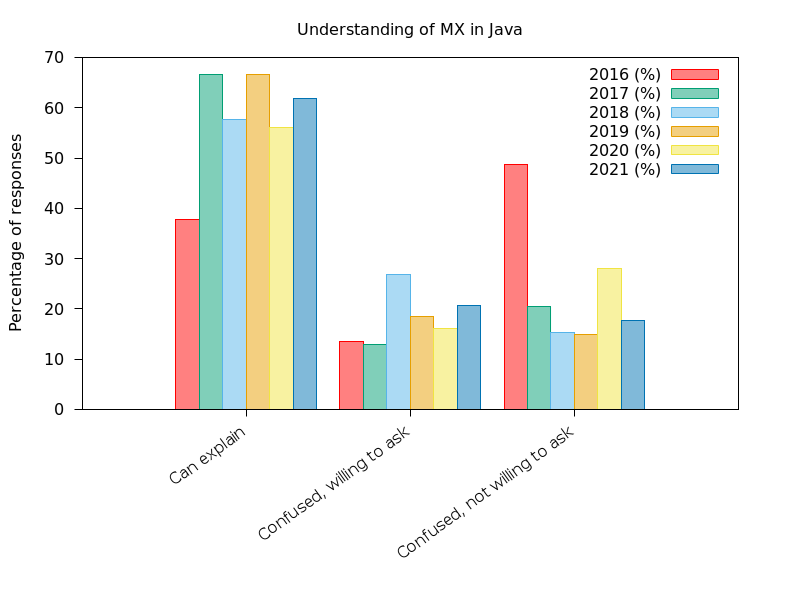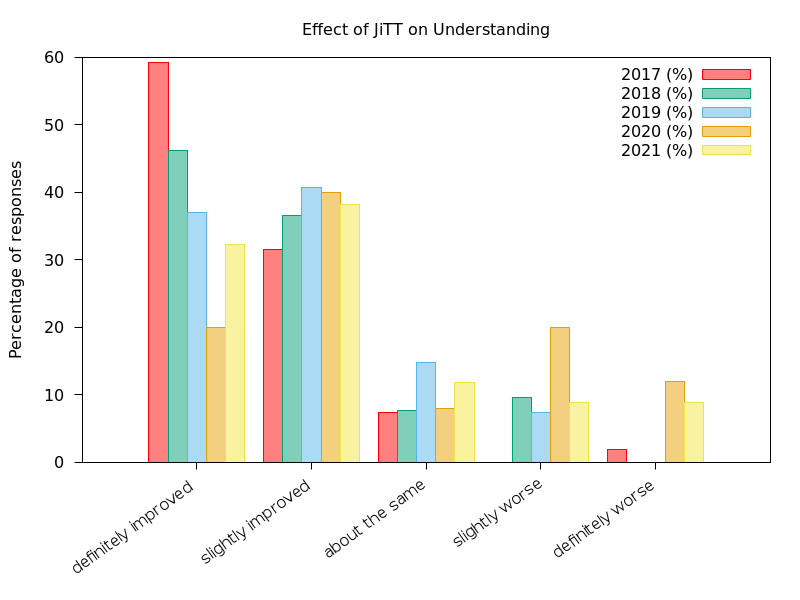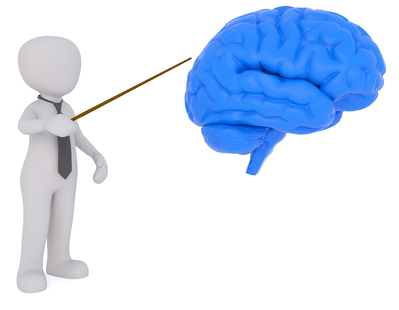Learning and Teaching
(Usage hints for this presentation)
Computer Structures and Operating Systems 2023
Dr. Jens Lechtenbörger (License Information)
Agenda
Introduction
- Think of something you are really good at
- Write it down (won’t be shared with anyone)
- Briefly describe how you got to be good at that thing
- One or two words
- Submit how you got to be good at
Pingo (pingo.coactum.de → 796643)

(Source of activity: [SEI14])
Learning
Brain ≈ Muscle
Learning involves brain’s long term memory
- Long term memory needs repeated retrieval and practice
- Spaced out over time
- Effect: Changes in brain’s proteins
- (Learning does not happen [solely] in lectures)
Deliberate Practice
Characteristics of Deliberate Practice to acquire expert skills ([Eri08], see also [EKT93],[SEI14])
- Task with well-defined goal
- Individual motivated to improve
- Feedback on current performance
- Ample opportunities for repetition and gradual refinements
(Traditional lecturing is “teaching by telling”, does not share any characteristic of Deliberate Practice)
Active Learning
- Active Learning increases student performance in science,
engineering, and mathematics ([FEM+14])
- Active Learning is an umbrella term for diverse
interventions
- Group problem-solving
- Worksheets or tutorials completed during class
- Use of personal response systems with or without peer instruction
- Studio or workshop course designs
- Notice: Above interventions share at least 3 of the 4
characteristics of Deliberate Practice
- (Motivation may increase, but ultimately rests with you)
- Active Learning is an umbrella term for diverse
interventions
Quotes from Experts
On [FEM+14]
- Carl Wieman, Nobel Prize in Physics 2001
- “A lecture is basically a talking textbook”
- In [Wie14]: “However, in undergraduate STEM education, we have the curious situation that, although more effective teaching methods have been overwhelmingly demonstrated, most STEM courses are still taught by lectures—the pedagogical equivalent of bloodletting.”
- Eric Mazur, Harvard physicist
- Carl Wieman, Nobel Prize in Physics 2001
- [SR17]: “Saying Goodbye to Lectures
in Medical School—Paradigm Shift or Passing Fad?”
- “60 slides in 45 minutes may seem like an efficient way to teach, but it is unlikely to be an effective way to learn”
CSOS Approach
Initial Problem and Improvement
- 2016: Classroom response system revealed lack of student understanding
- Yet, no in-class discussions, leaving me frustrated
- Waste of our time
- Yet, no in-class discussions, leaving me frustrated
- After introduction of JiTT: Situation improved

General Improvements

CSOS Teaching History
- In 2016, I taught CSOS in its entirety
- With lots of in-class quizzes of questionable effect, as just explained
- Subsequently, Prof. Dr. Vossen taught CS part, I OS
- With slightly different flipped classroom approaches
- Since 2021, I’m teaching CSOS again in its entirety
- Again with different formats for CS and OS
- Reuse of CS videos from 2020
- HTML presentations such as this one for OS
- With evaluation of both formats
- With uniform use of JiTT quizzes in both parts, explained next
- Again with different formats for CS and OS
Just-In-Time Teaching (JiTT)
Overview
- JiTT
- Teaching and learning strategy based on web-based study
assignments (self-learning) and active learner classroom
- See JiTT on Wikipedia
- [MSN16] demonstrates improved learning for statistics courses
- Instance of active learning, which leads to improved learning in general [FEM+14]
- Instance of flipped/inverted classrooms [LPT00],[BV13]
- In-class and at-home events flipped
- Individual computer-based instruction paired with in-class (group) activities
- Individual learning shaped by individual background and preferences
- Lectures to discuss questions and work on exercises
- Teaching and learning strategy based on web-based study
assignments (self-learning) and active learner classroom
Feedback Cycles with JiTT

“Feedback cycles with JiTT” by Jens Lechtenbörger under CC BY-SA 4.0; from GitLab. Includes icons by The Noun Project under CC BY 3.0 US: Meeting by Ainsley Wagoner; knowledge sharing, professor, student, audio lesson, online task, online communication by ProSymbols.
Lessons Learned
Sample Feedback
- Misunderstandings
- “JiTT destroys our freedom!”
- “JiTT tasks are too difficult/open!”
- Encouragement
- “JiTT is/was a very good idea and was very helpful to understand the course’s content”
- “The JiTT-Assignment in combination with the lecture helped to understand the topics a lot!”
- “Please continue with this type of lecuture!”
Benefits and Challenges
- Benefits
- Much more fun in meetings with prepared students
- Sometimes unbelievably good solutions
- JiTT tasks helped tremendously to identify misunderstandings
and improve self-study material
- From wording to new larger units
- Much more fun in meetings with prepared students
- Challenges
- Regarding students
- Participation in class and in JiTT assignments
- Workload expectations
- Regarding myself
- Increased awareness of hurdles for students
- Regarding students
On Last Year’s CSOS Evaluation
- Only 23 students took part
- Heterogeneous grade distribution
- (See notes; from 4*1.0 to 1*4.0, neither 2.3 nor 5.0)
- Sample quotes
- Definitely my favourite Informatics module so far. I liked both parts, though I think the CS parts could use some reworking, either with HTML presentations aswell or with new videos.
- Definitely one of the best lectures I visited.
- I just don’t see the point of the “non-lectures”.
- I dont liked JiTT and the HTML5 presentations.
- Repeated issues
- English with positive (practice) and negative (additional complexity) comments
- Maybe too little material for CS, too much for OS
- Heterogeneous grade distribution
Comments on Workload
- CSOS is worth 9 credits
- Almost a third of your weekly workload, maybe 12 hours per week
- 12 hours = 8 * 90 minutes
- 3 class sessions
- Time for 5 sessions remaining
- Suggestion: Reserve self-study time in your weekly schedules
- Preparation of class topics
- Exercise work
Final Remarks
On Expectations
[D+19] Actual learning vs feeling of learning
- Questions regarding statistical rigor
- One conclusion: Explain approach to students
JiTT in CSOS 2022
- Joint sessions shaped by you!
- Default plan
- Tuesday sessions for first two tasks of exercise sheets
- Wednesday session for general Q&A on exercises
- Thursdays for Q&A on sample solutions
- Please use Learnweb for asynchronous discussions
- MoodleOverflow worked well last year
- In addition, anonymous pads for synchronous and asynchronous Q&A
Bibliography
- [BV13] Bishop & Verleger, The flipped classroom: A survey of the research, in: ASEE National Conference Proceedings, Atlanta, GA, 2013. https://www.asee.org/public/conferences/20/papers/6219/download
- [D+19] Deslauriers, McCarty, Miller, Callaghan & Kestin, Measuring actual learning versus feeling of learning in response to being actively engaged in the classroom, Proceedings of the National Academy of Sciences 116(39), 19251-19257 (2019). https://www.pnas.org/content/116/39/19251
- [EKT93] Ericsson, Krampe & Tesch-Römer, The role of deliberate practice in the acquisition of expert performance, Psychological review 100(3), 363 (1993). http://projects.ict.usc.edu/itw/gel/EricssonDeliberatePracticePR93.PDF
- [Eri08] Ericsson, Deliberate practice and acquisition of expert performance: a general overview, Acad Emerg Med 15(11), 988-994 (2008). https://www.onlinelibrary.wiley.com/doi/full/10.1111/j.1553-2712.2008.00227.x
- [FEM+14] Freeman, Eddy, McDonough, Smith, Okoroafor, Jordt & Wenderoth, Active learning increases student performance in science, engineering, and mathematics, Proceedings of the National Academy of Sciences 111(23), 8410-8415 (2014). https://www.pnas.org/content/111/23/8410
- [LPT00] Lage, Platt & Treglia, Inverting the classroom: A gateway to creating an inclusive learning environment, The Journal of Economic Education 31(1), 30-43 (2000).
- [MSN16] McGee, Stokes & Nadolsky, Just-in-Time Teaching in Statistics Classrooms, Journal of Statistics Education 24(1), 16-26 (2016). https://amstat.tandfonline.com/doi/abs/10.1080/10691898.2016.1158023
- [SEI14] Course Transformation Guide, UBC and CU Science Education Initiatives, 2014. http://www.cwsei.ubc.ca/resources/files/CourseTransformationGuide_CWSEI_CU-SEI.pdf
- [SR17] Schwartzstein & Roberts, Saying Goodbye to Lectures in Medical School—Paradigm Shift or Passing Fad?, New England Journal of Medicine 377(7), 605-607 (2017). http://dx.doi.org/10.1056/NEJMp1706474
- [Wie14] Wieman, Large-scale comparison of science teaching methods sends clear message, Proceedings of the National Academy of Sciences 111(23), 8319-8320 (2014). http://www.pnas.org/content/111/23/8319
License Information
This document is part of an Open Educational Resource (OER) course on Operating Systems. Source code and source files are available on GitLab under free licenses.
Except where otherwise noted, the work “Learning and Teaching”, © 2018, 2021-2022 Jens Lechtenbörger, is published under the Creative Commons license CC BY-SA 4.0.
In particular, trademark rights are not licensed under this license. Thus, rights concerning third party logos (e.g., on the title slide) and other (trade-) marks (e.g., “Creative Commons” itself) remain with their respective holders.

